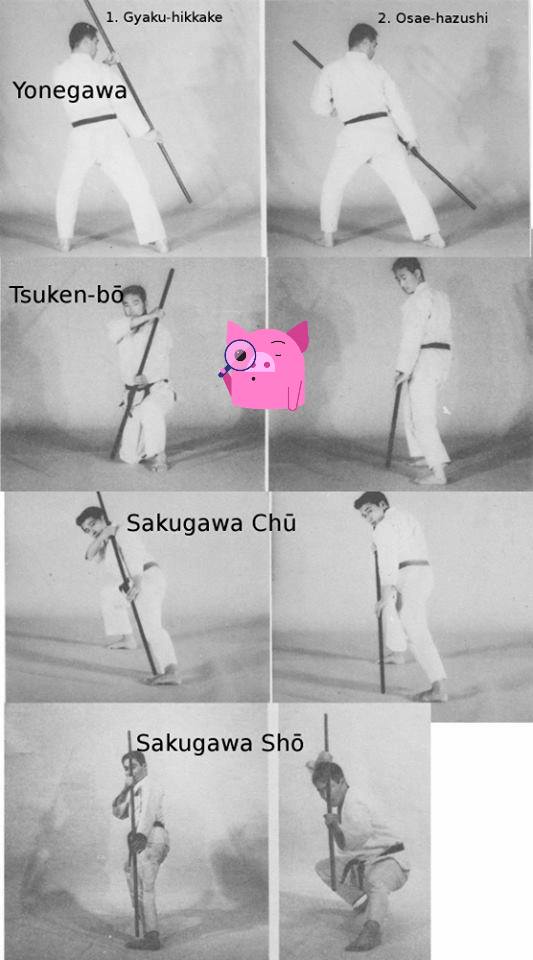In Ryukyu Kobudo the technique of “hiding behind the bō” is found in most of the bōjutsu Kata, including Yonegawa, Tsuken-bō, Chōun, Chatan Yara, Sakugawa Chū Shō and Dai, Urasoe, Sesoko, Kongō and others.
In Ryukyu Kobudo of the Taira lineage, this technique is variously referred to as Gyaku-hikkake (reverse hanging hook), Gyaku-te Sukui-uke (reversed scooping), Mamori (defense), and in Okinawa it is called Tate-uke (vertical block) and such.
The following rolling move is called Osae-hazushi (uncoupling press), Hikkake (hanging hook), Hiki-sagari (pulling down), and in Okinawa Maki-osae (winding press), etc.pp.
The idea of the technique becomes more clear by these words, yet it still is “open construction.” Nothing is actually fixed.
Well, looking at the older literary works on Ryukyu Kobudo (1st half of 20th century) it gets clear that the establishment of a unified technical terminology took place – for the most part – in the 2nd half of the 20th century only, and with different result in different groups (dojo, associations, …).
There are hardly any “old” or even Okinawna language names for techniques and most of the original tactics were probably lost by then anyway, and the new names were inspired by fragmentary personal instruction, what some guy might have remembered, or borrowed from other Japanese martial arts. But it is clear that these terminologies were invented.
© 2024, Andreas Quast. All rights reserved.

